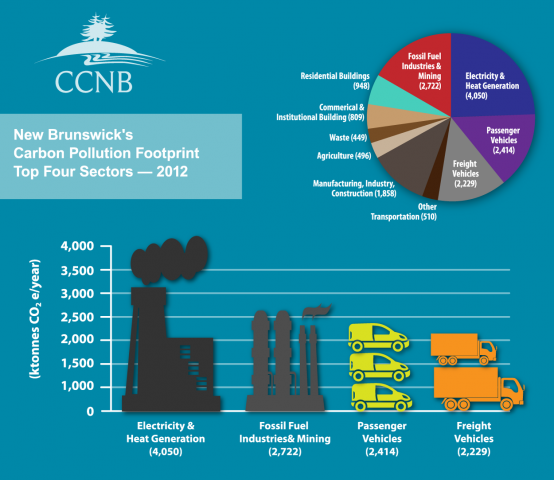Editor’s note: The following appears in our Special Edition issue of EcoAlert, Making it Happen: COP21 in Paris
Standing beside Canada’s Prime Minister Justin Trudeau at November’s Asian-Pacific Economic Cooperation forum, American President Barack Obama used a great metaphor to describe how he sees transition away from polluting energy sources to a low-carbon economy unfolding, so that globally we can help avoid devastating climate change.
“This is going to be a messy, bumpy process worldwide, but I am confident that we can get it done,” Obama said. “And the fact that we now have a very strong partner in Canada to help set up some global rules around how we approach this, I think, will be extraordinarily helpful.”
Canada, climate change, and helpful as words all in the same sentence hasn’t happened for more than 10 years now. And the bumpy road metaphor could serve well as advice to all premiers, our own Brian Gallant, included. After all, good national plans to reduce pollution almost always, at heart, contain key actions taken by provincial leadership.
No one should be fooled by claims that because our country’s pollution is a small part of the global carbon emissions equation there is little we can or should do. The fact is Canada is the ninth largest contributor to the greenhouse gases that cause climate change, pumped out worldwide when we burn oil, gasoline, coal and natural gas. That, and the additional statistic that puts Canadians well ahead on a carbon pollution-per person basis when compared to other citizens worldwide, means every step we take will help. New Brunswickers rank third in per capita carbon pollution in Canada, after Albertans and people living in Saskatchewan, mostly because of our dependency on coal-fired electricity and oil for heating.
If I can borrow President Obama’s bumpy road metaphor, the New Brunswick government can demonstrate it is serious about tackling carbon pollution with these three elements of mapping the road toward a carbon-free energy future.
We need to get the destination right
 We must limit the ratio of carbon dioxide in Earth’s atmosphere to 350 parts per million (compared to all other molecules) to keep global warming to below 2 degrees Celsius by 2050 to avert the worst impacts of climate change. That tight reduction budget — we are at about 400 ppm today — means we need plans now to de-carbonize our economy — moving quickly and with ambition beyond burning coal, oil and natural gas to using 100 per cent renewable energy sources by 2050 at the latest. That’s our destination.
We must limit the ratio of carbon dioxide in Earth’s atmosphere to 350 parts per million (compared to all other molecules) to keep global warming to below 2 degrees Celsius by 2050 to avert the worst impacts of climate change. That tight reduction budget — we are at about 400 ppm today — means we need plans now to de-carbonize our economy — moving quickly and with ambition beyond burning coal, oil and natural gas to using 100 per cent renewable energy sources by 2050 at the latest. That’s our destination.
We need to build a better road
Clean electricity is going to become the backbone of the new economy, and in NB, the key to a low-carbon future is to phase out coal and commit to getting all new electricity supply from renewable energy sources over the next 10 years. Environment Canada’s 2013 greenhouse gas inventory report pegged N.B. coal-fired electricity at almost three million tonnes, the single largest source in the province.
To give some credit where credit is due, NB Power’s plans to reduce electricity demand over time, increase renewable energy sources, and invest, if somewhat cautiously, in energy efficiency and a smart grid, are all good ideas. At issue is how long their plan will take to get us to our destination. Our utility’s timeframe to get rid of coal is 2045, a full 30 years slower than Ontario, 20 years later than all of Britain and a decade longer than even Alberta.
A clean electricity system that derives all of its energy from renewable sources like solar, wind, tides and hydro can serve not only home and business heating needs but also help fuel the transition in transportation — where we can rely on this century’s electric batteries instead of last century’s combustion engines.
The new road isn’t all shiny bells and whistles like solar panels and tidal turbines. It needs to include boring things like better windows and insulation in basements and attics. The good news about government investment in energy efficiency for industry and building retrofit programs are the immediate jobs it creates — for every dollar spent on efficiency, four dollars are returned to the provincial economy.
We need a traffic cop
Much as we’d all like it — our roads aren’t governed by voluntary actions. Just like we need speed and vehicle safety laws, so too do we need new laws and rules to guide our economy. We have voluntary targets now — a 10 per cent carbon reduction by 2020, for example, and between 35-45 per cent reduction by 2030. The provincial government needs to introduce new legislation that sets firmly in place targets and timelines for carbon reduction, include provisions for caps on large polluters, and guides new building developments toward net-zero energy use. Progressive legislation would also examine how to charge for pollution — right now it rides free — whether through a carbon tax, like British Columbia, or through cap and trade system, like Quebec and Ontario.

By Lois Corbett, Executive Director of the Conservation Council of New Brunswick
[This article also appeared as a column in the Nov. 27 edition of the Fredericton Daily Gleaner, and the Dec. 9 edition of the New Brunswick Telegraph-Journal]
Part of our Renewable Solutions NB Project


